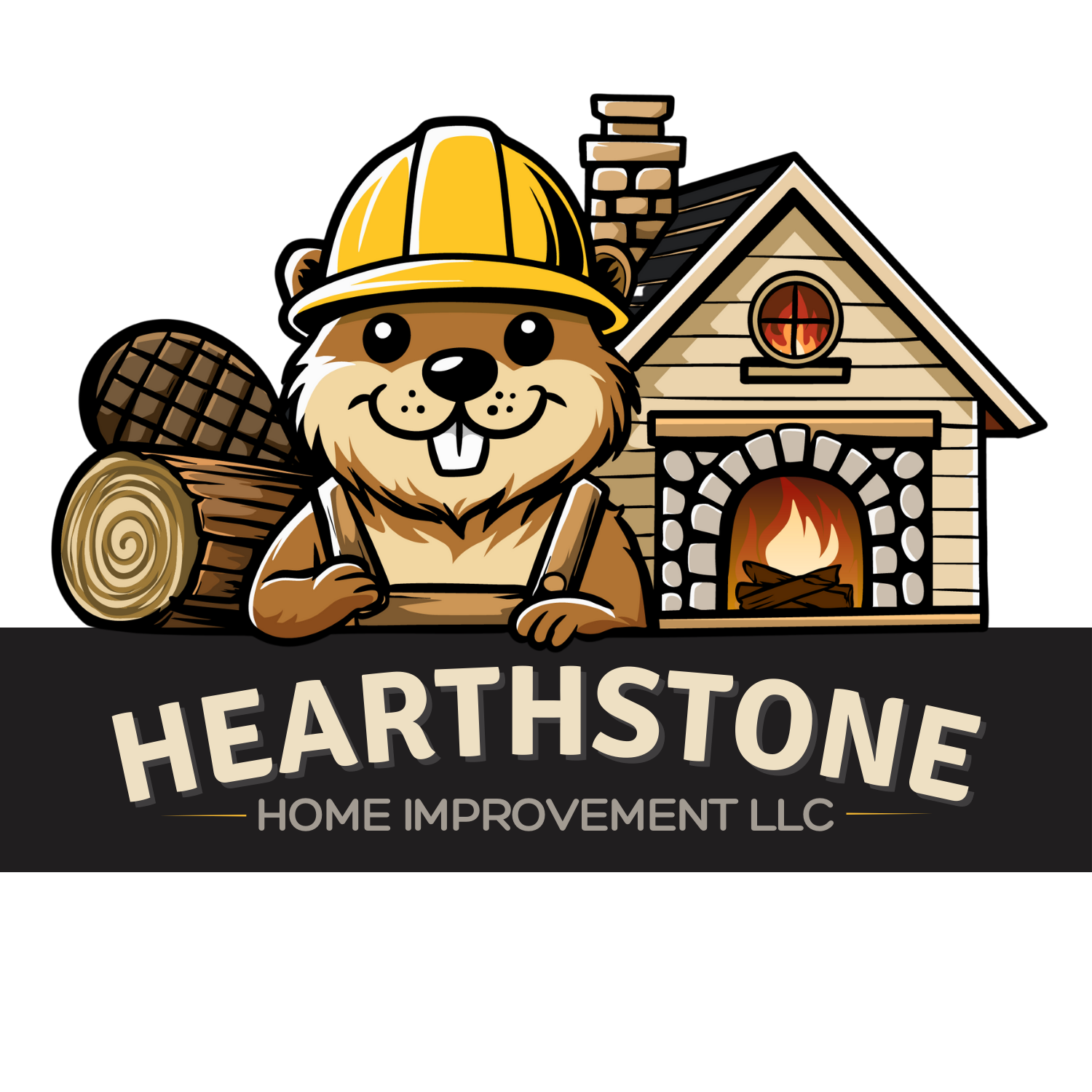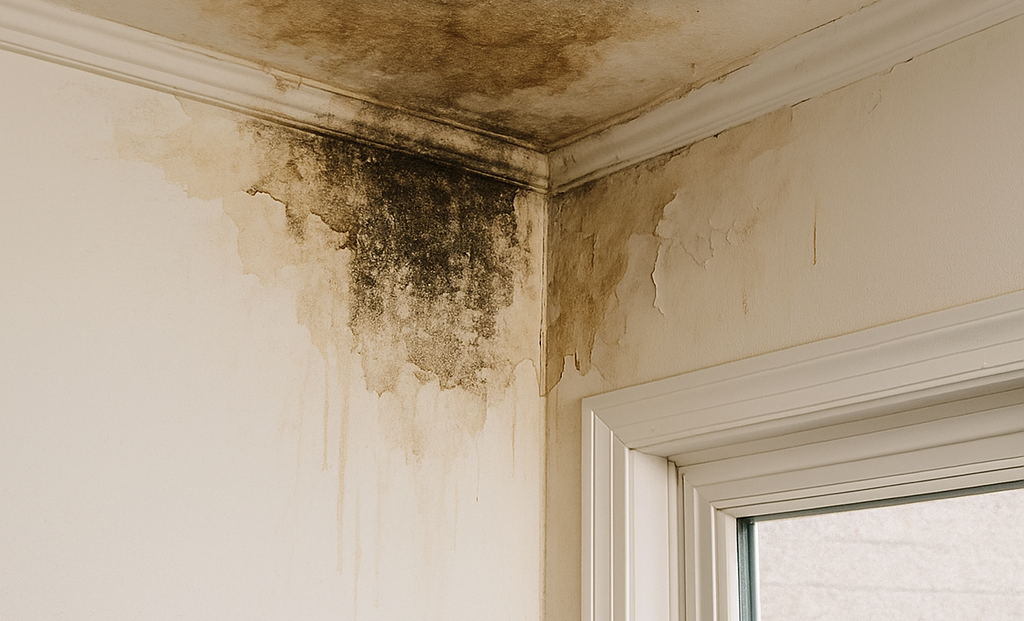Detecting a roof leak is only the first step. Even a small drip can hide serious issues such as mold growth, wood rot, or compromised insulation. For homeowners wondering about how to tell if a roof leak is causing hidden damage this guide provides clear early warning signs, inspection tips, and actionable steps to protect your home and your budget.
What Happens When a Roof Leaks
When water enters through damaged shingles, flashing, or deteriorated seals it often travels along rafters or inside ceilings before visible signs appear. That means by the time water stains show up there could already be damage within the structure. Understanding how water spreads can help you determine how to tell if a roof leak is causing hidden damage before the problem escalates.
Leak related issues often include wood rot in roof decking rafters or support beams compromised insulation that affects heating and cooling efficiency mold and mildew behind ceiling drywall or interior walls and in severe cases structural weakness including sagging ceilings or collapsed drywall.
Because these issues grow silently homeowners need to regularly inspect their roof and act quickly at the first sign of trouble.
Visible Signs That Hidden Damage Might Exist
Even if a leak seems small there are visual indicators to determine if hidden damage is occurring.
Ceiling and Wall Stains or Discoloration
Brown or yellow stains on ceilings or upper walls are classic signs of water intrusion. Irregular shapes or ring patterns hint at water accumulating within drywall or plaster. A small discoloration today may conceal a soggy cavity filled with deteriorating wood and trapped moisture. Regular inspection of your ceiling surface helps catch early warning signs.
Peeling or Bubbling Paint
If paint near the roofline indoors or under eaves is peeling or bubbling it may signal moisture seeping through the roofing structure. This distortion is an early indicator that water is not draining properly above, making timely intervention key.
Warped or Sagging Drywall
A gentle sag or bulge in drywall indicates saturated drywall or plaster absorbing moisture. Over time that softened material may sag or collapse revealing deeper, unseen damage.
Mold or Mildew Growth
Mold and mildew bloom in damp conditions. Black or green specks along attic ceilings or inside closets may signal continuous moisture from a leaking roof. Identifying these early helps answer how to tell if a roof leak is causing hidden damage.
Dark Spots and Wood Staining in Attic
Attic rafters and plywood decking are among the first interior surfaces to show water staining. Stains around fasteners seams or skylights suggest water intrusion. Removing insulation in tested areas allows inspection to confirm suspected leaks and hidden damage.
Symptoms That A Leak May Be Causing Hidden Damage
Beyond visible signs additional clues help homeowners determine how to tell if a roof leak is causing hidden damage before it becomes serious.
Increased Energy Bills
Hidden moisture in insulation or wood increases heat flow forcing HVAC systems to work harder. A sudden spike in heating or cooling costs without increased use could indicate moisture related issues.
Musty or Damp Smell
Mold and mildew emit a characteristic odor. If there is a persistent smell in upper hallways or attic spaces it may indicate hidden moisture behind walls or ceilings.
Indoor Humidity Spikes
High indoor humidity confined to upper floors may point to damp attic or wall cavities. Moist insulation slowly releases water vapor into living spaces so monitoring with a hygrometer can highlight problems early.
Peeling Caulk or Water in Outlets
Peeling or missing caulk along high windows ceilings or soffits may reveal moisture infiltration. Water in outlet boxes near ceilings signals moisture traveling through structural framing and insulation layers.
Inspection Tips to Reveal Hidden Damage
If you suspect damage here are practical inspection steps to confirm how to tell if a roof leak is causing hidden damage.
Check the Attic Thoroughly
Visit your attic on a dry sunny day. Look for daylight through roof boards especially around flashing chimneys vents or valleys. Use a moisture meter on rafters and decking to detect saturated wood. Inspect insulation depth and condition in areas suspected of leaks and remove mold carefully using cross ventilation and masks.
Inspect the Roof Exterior
Walk the perimeter noting sagging gutters or water streaks below. Use binoculars to scan for missing damaged or curled shingles. Look for granular loss in several shingles which signals wear. Examine flashing around chimneys, vents, skylights, and dormers for lifting or cracked seals.
Conduct a Controlled Water Test
If the leak is dormant set up a tested water spray. With someone monitoring the attic slowly spray roof sections for a few minutes each. Watch for dripping or fresh staining. This helps pinpoint problem areas and answers how to tell if a roof leak is causing hidden damage at its source.
When to Call a Professional
Some damage requires professional intervention. Call a licensed roofer if inspections reveal any of the following:
Extensive mold or saturated insulation
Rotted rafters or structural beams
Active leaks during storms or water testing
Multiple damaged or missing shingles
Roof age older than 15 years or no documented maintenance
A professional will perform a full moisture scan assess structural integrity and identify precise repair or replacement needs. Clear diagnostics guide effective repairs and prevent unnecessary costs.
Treatment Options for Hidden Roof Damage
Once damage is confirmed here are the usual remediations:
Roof Repair
Small leaks require targeted repairs such as replacing damaged shingles re flashing around vents and chimneys and resealing seams. Gutters may also need realignment or repairs to improve drainage.
Partial Roof Section Replacement
If damage is isolated under a specific area like a dormer or valley a partial section replacement may restore integrity without a full tear off.
Full Roof Replacement
Major damage affecting decking rafters or insulation requires total roof replacement. This ensures full warranty eligibility enhances energy performance and restores structural soundness.
Preventing Future Hidden Damage
After repairing current issues it is vital to reduce future risk. Follow these steps to avoid recurring leaks:
Schedule annual professional roof inspections in spring
Trim overhanging tree branches to prevent damage and moss growth
Clean gutters and downspouts at least twice a year
Ensure proper attic ventilation and insulation to combat ice dams
Re seal or replace flashing around roof penetrations as materials age
Choose a maintenance plan with reliable local roofing experts
These actions help answer how to tell if a roof leak is causing hidden damage by eliminating repeated risk factors.
Frequently Asked Questions
Will a roof leak fix itself if it stops dripping?
No it will not. Water stains worsen as moisture continues. Even when dripping stops damage and mold continue unless addressed.
Can I detect hidden damage without attic access?
Visible signs like stains peeling paint or odors help clues but attic inspection is needed for full assessment.
Why is mold inside my ceiling dangerous?
Exposure to mold spores can impact respiratory health and should be removed by professionals.
How much does repairing hidden damage cost?
Minor repairs may run several hundred dollars. Major remediation including sheathing insulation and partial roof replacement can range from 1500 to 5000 dollars or more.
How quickly should I inspect after a storm?
Within 24 hours to catch leaks before mold growth or sheetrock softening.
Final Thoughts
Knowing how to tell if a roof leak is causing hidden damage is key for responsible homeownership. Monitoring for signs like stains peeling paint odor humidity fluctuations attic inspections and test spraying will help catch issues early. Professional evaluation confirms extent and determines restoration path.
If you suspect ongoing damage contact Hearthstone Home Improvement for a free inspection. Our team will identify hidden problems outline repair or replacement strategies and help restore your home’s structural health and energy performance.

